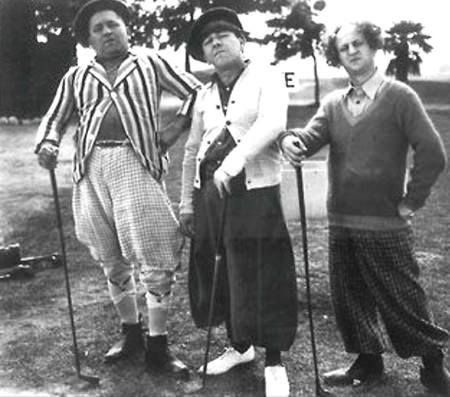Welcome to Golfnutter’s Blog – a weekly commentary highlighting contemporary golfing issues, in Pattaya and beyond. For more on matters golf, especially Pattaya golf, visit golfnutter.wordpress.com.
A bit tired of the usual stableford format that most tournament play demands? Want to spice up your four-ball by introducing your regular partners to something different?

Some golf venues have the occasional “fun” day where the golf need not be so serious. Equally, for those who don’t play in organised groups, perhaps a “fun” day offers a unique way of getting into your mate’s wallet.
Here’s a suggested list of events I will label “alternative”. Some are better suited to a four-ball out on their own, whilst others could be played amongst a bigger field. They are listed in order of tameness – from meek to outrageous. All are designed for betting.
Alternative 1 – Split Sixes: Suitable for three-balls. A tried and true way to provide a competitive edge for three-balls. Each hole offers six points which are allocated according to stableford score per player per hole. If each player scores two stablefords on a hole, then the six points would be split equally. If one player scores net birdie (3 stablefords), and another net par (2 stablefords) whilst the third net bogeys, then points allocated would be 4 + 2 + 0 and so on. Baht values are allocated to points prior to starting. Points are tallied up at the end of the round to determine who pays whom what. Note: all six points to one player if their score on any hole is better than the second-placed score by a net two shots. This helps maintain interest from a distant third placegetter during the final holes.
Alternative 2 – Rainbow: Suitable for any number. Each player is allowed to choose their tee-box for each hole, providing they finish with six hit from the Blues, six from the Whites/Yellows and six from the Reds. The player who thinks through the issues relative to the course being played, and applies the best strategy relative to handicap, will be favoured to do well.
Alternative 3 – Holding the Snake: Suitable for a four-ball or less. Any player three-putting or worse (the first putt must start from on the green), contributes an agreed amount into the kitty. As each contribution is made, the snake (a toy replica) is passed from one contributor to another. The last person to three-putt is left holding the snake, and must match the amount in the kitty.
Alternative 4 – South African Stableford: Suitable for a four-ball or group. Teams of two combine their stableford score on each hole, but in this case the scores are multiplied. So, two net pars would mean 2×2=4. The fun really starts when one player gets a three or four pointer only to have his/her partner blob the hole. Multiply anything by zero and what do you get?
Alternative 5 – Strike Three: Suitable for mid-to-high handicap groups. Each player gets to discard their three worst scoring holes, after the round is completed. This is great for players who always have two or three blow-ups per round.
Alternative 6 – Bisque: Suitable for a four-ball or group. Forget how the course has rated each hole, i.e., the stroke index; you decide. This game allows the player to use their handicap how and when they want, until they run out. Up to two shots may be used on any one hole, provided the player states his/her intention prior to starting that particular hole.
Alternative 7 – Steal: Suitable for four-ball match (FBBB-match in British terms. Pairs match-play in US terms). The winner of a hole gets to choose which of their opponent’s clubs becomes out of play – for the remainder of the round. A team may have a club reinstalled if they make net birdie or better to win a hole. New skills will be needed here as players learn how to execute shots in different ways with different clubs. Hint; maybe your 14 clubs should include an extra putter or two.
Alternative 8 – Atlanta: Suitable for four-ball match only. This is an absolute hoot! Four players tee-off the first tee. The two balls furthest right are partners against the two balls furthest left – for that hole only. This procedure is used for all 18 holes. Scoring is based upon combined stableford with each point worth an amount agreed prior to commencement. Now, imagine the ball of the first player going into a water hazard, or worse, OB? How far in the opposite direction will the second player align? And what about the next tee shot, and the one after that? Whilst a lot of fun, this game needs to be played on a near-deserted course. The alternative is to temporarily suspend the “left versus right” rule until the group behind plays through. Pick a course with lots of water!
Happy golfing,
Golfnutter




